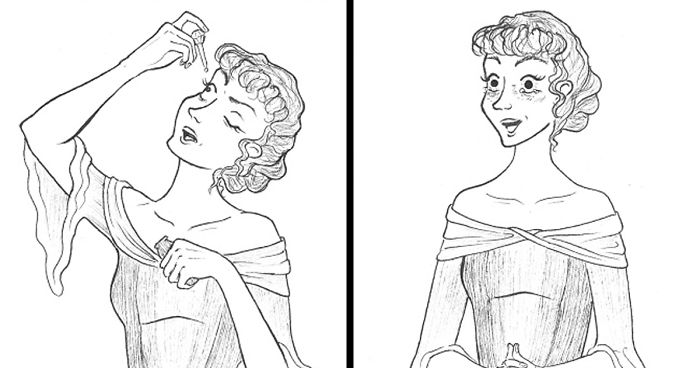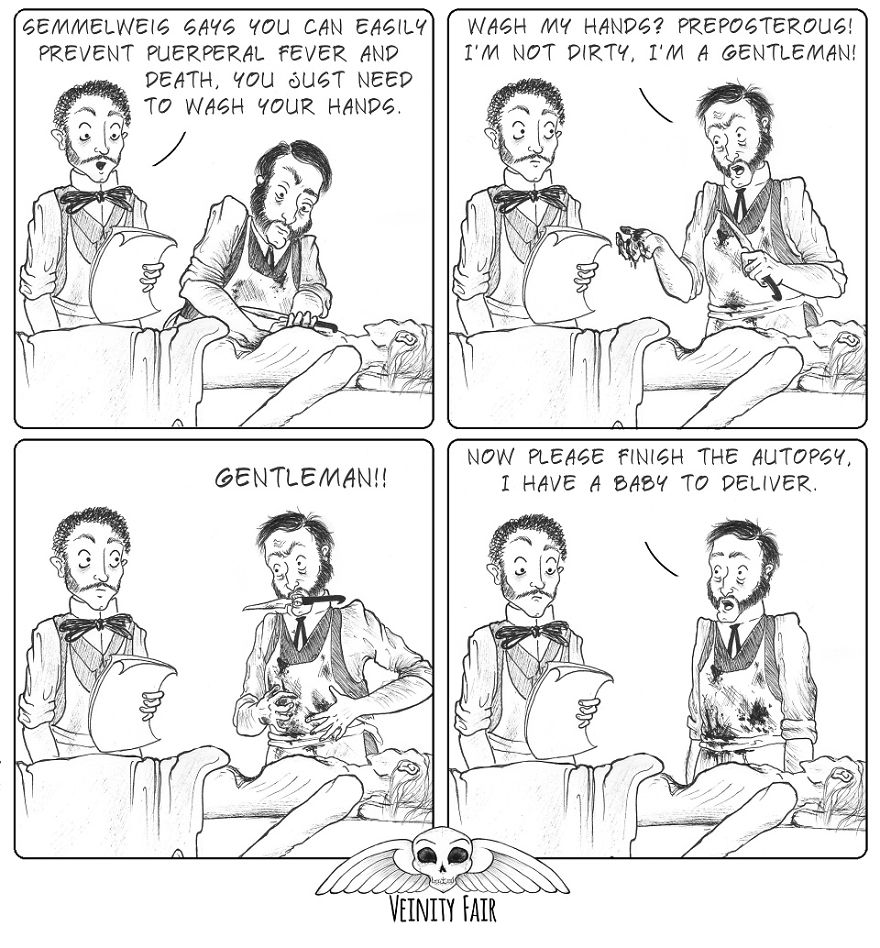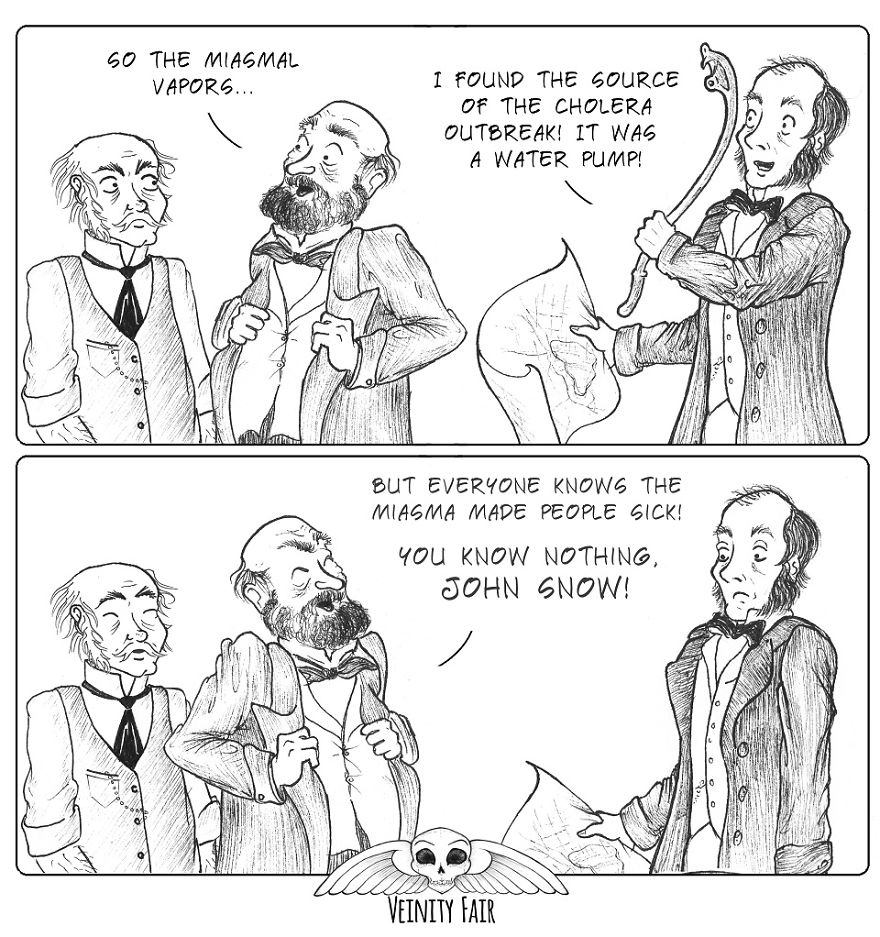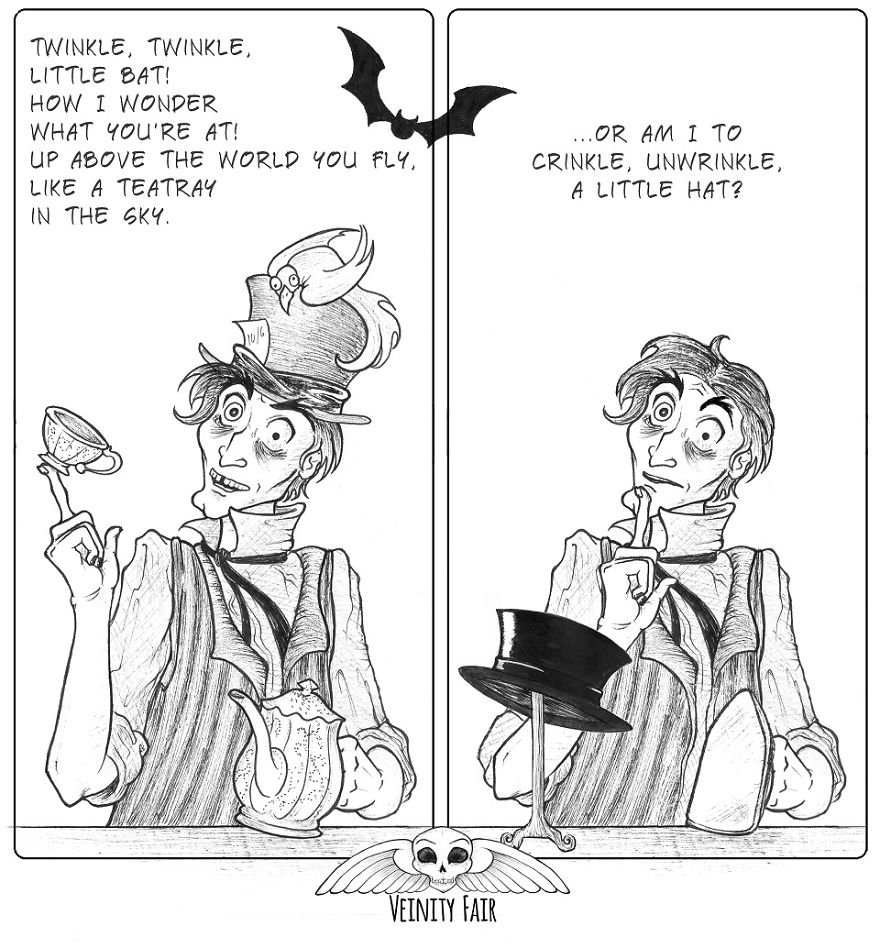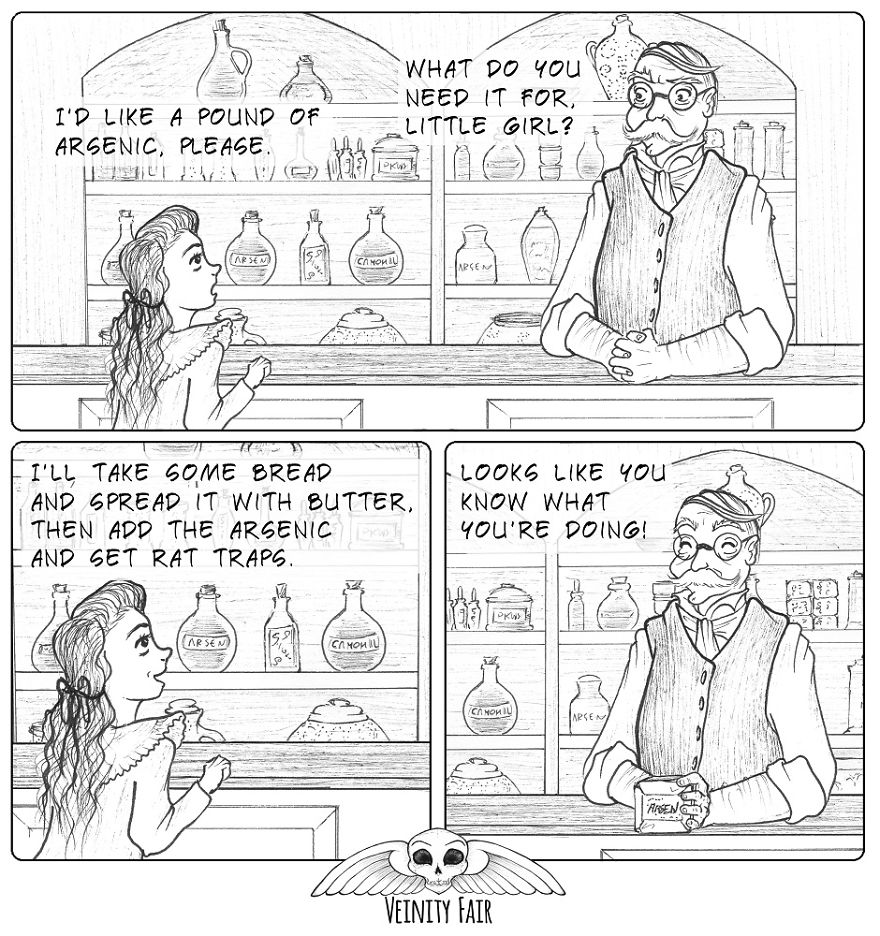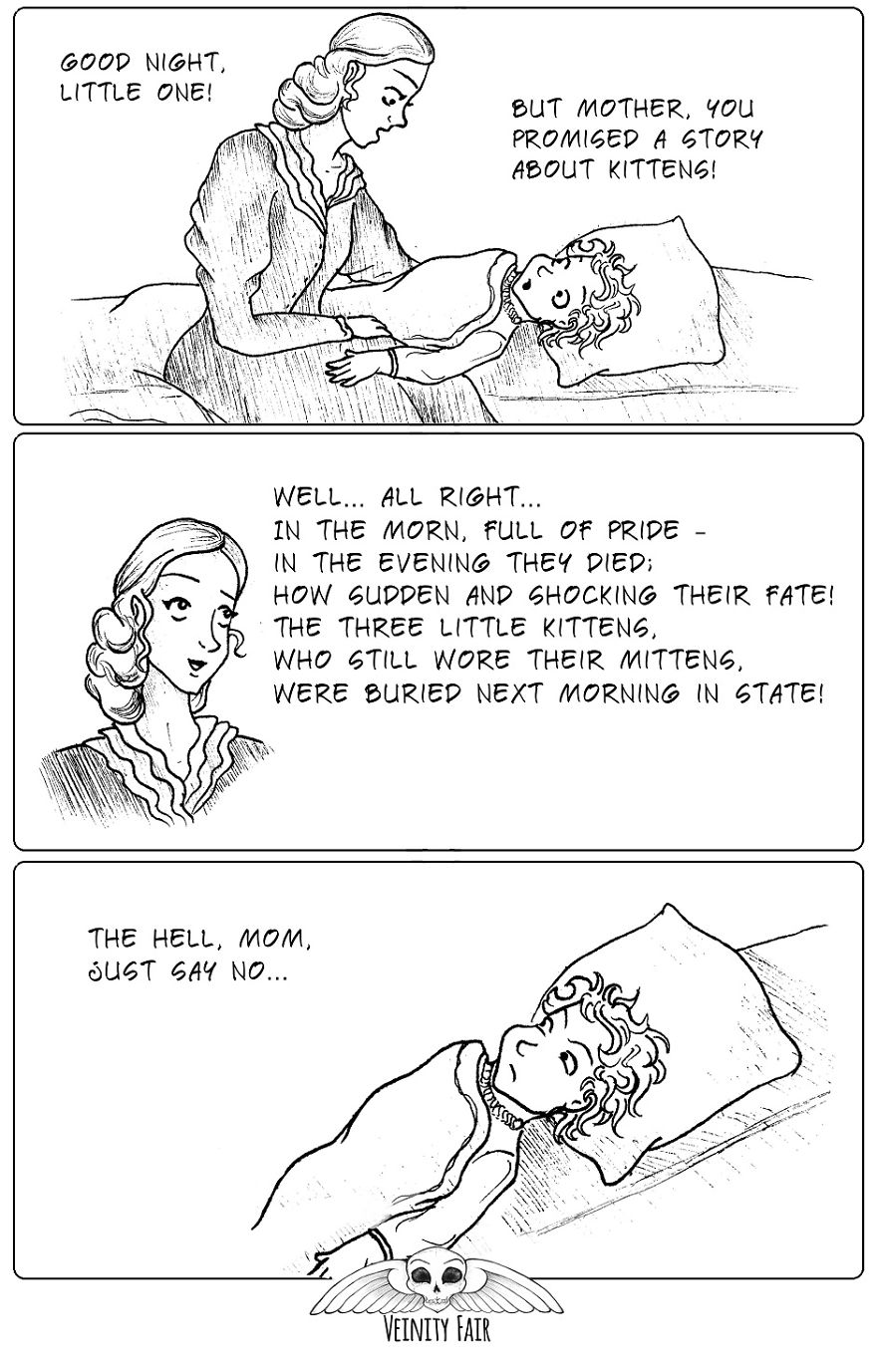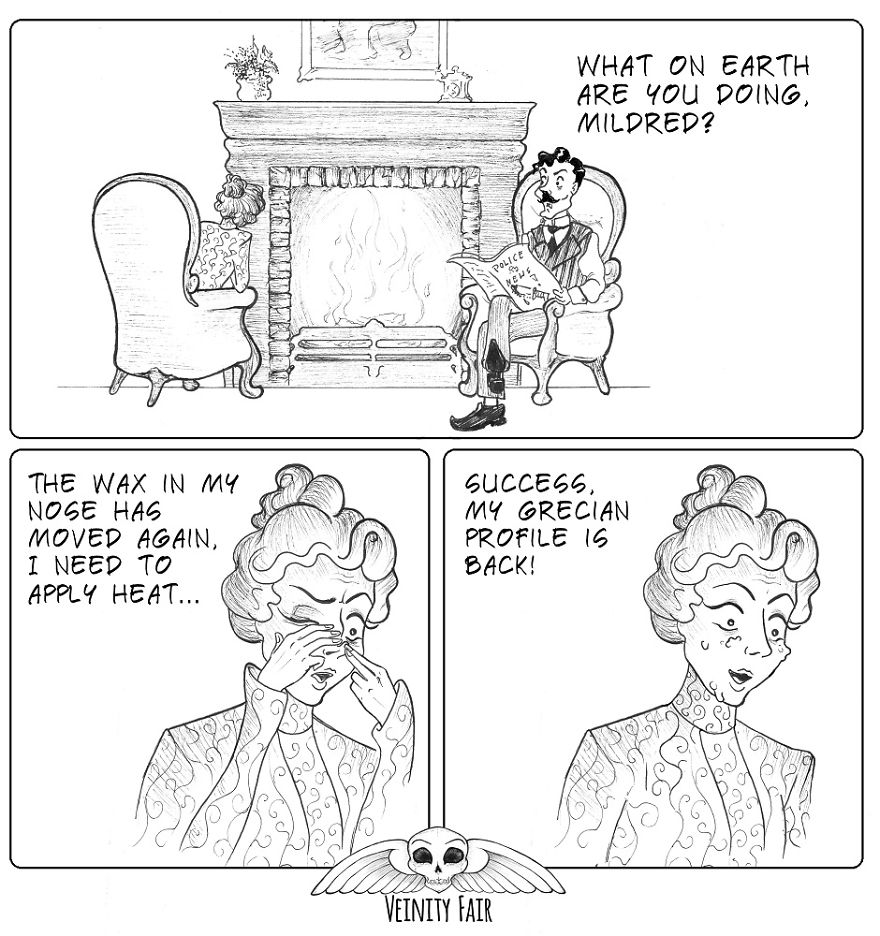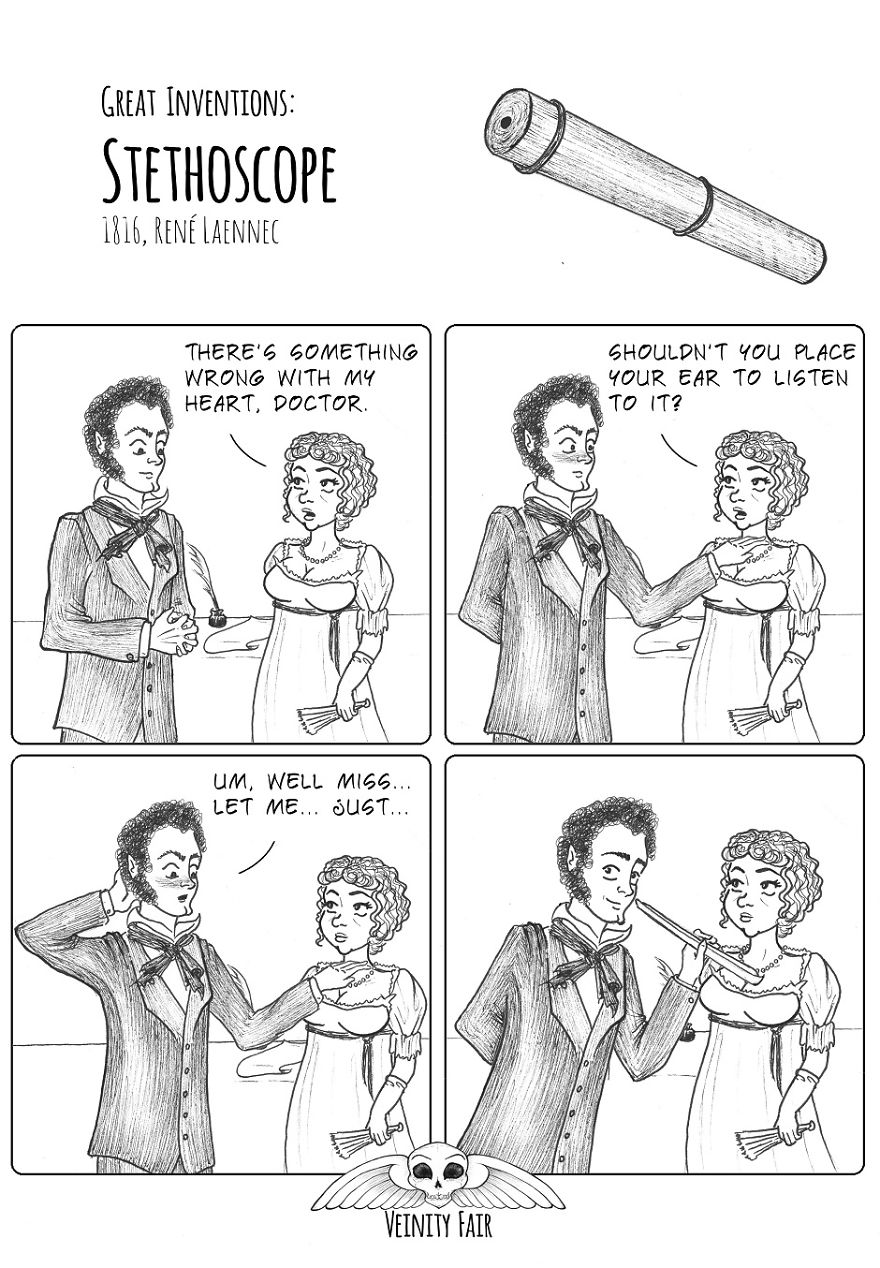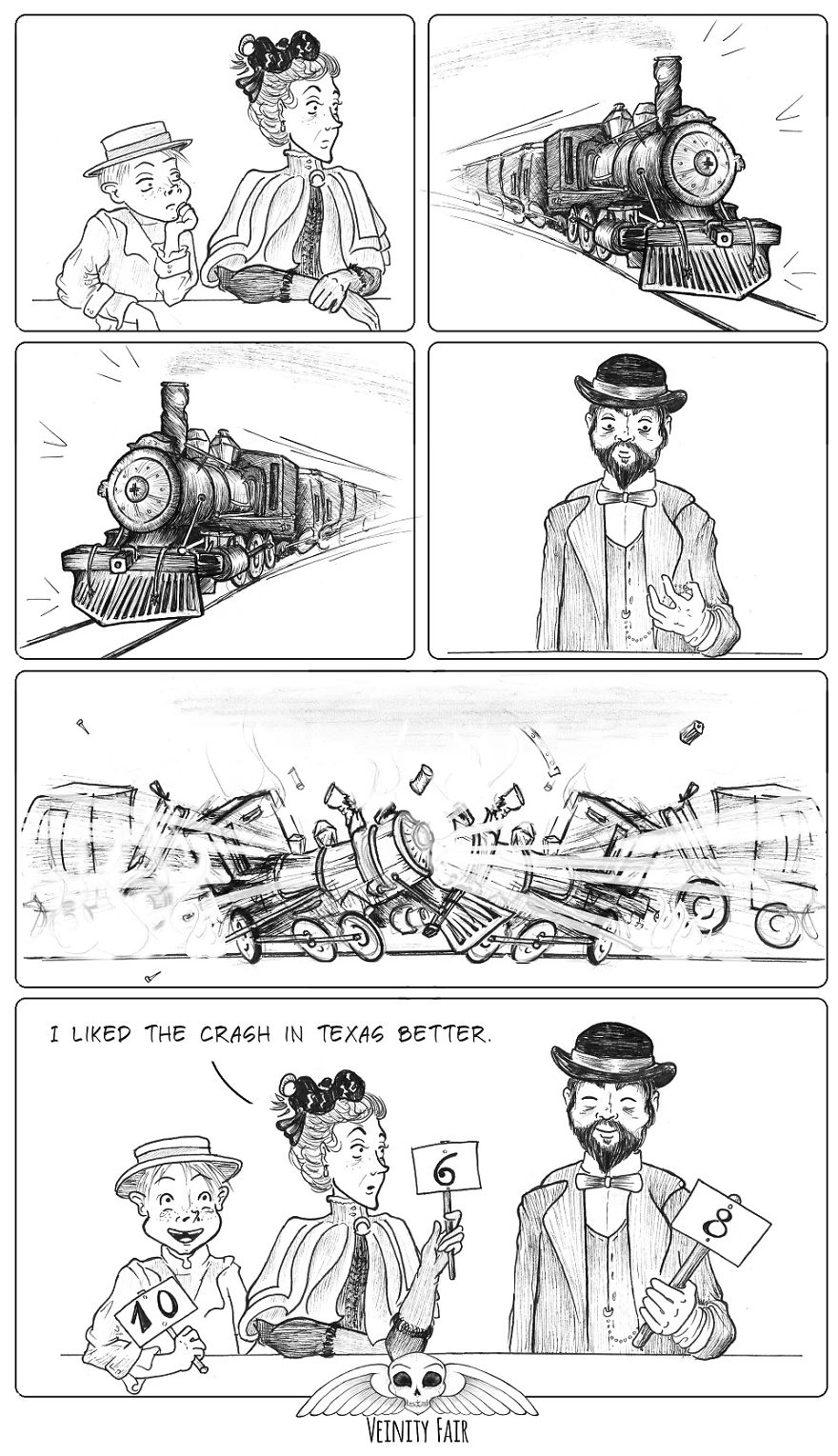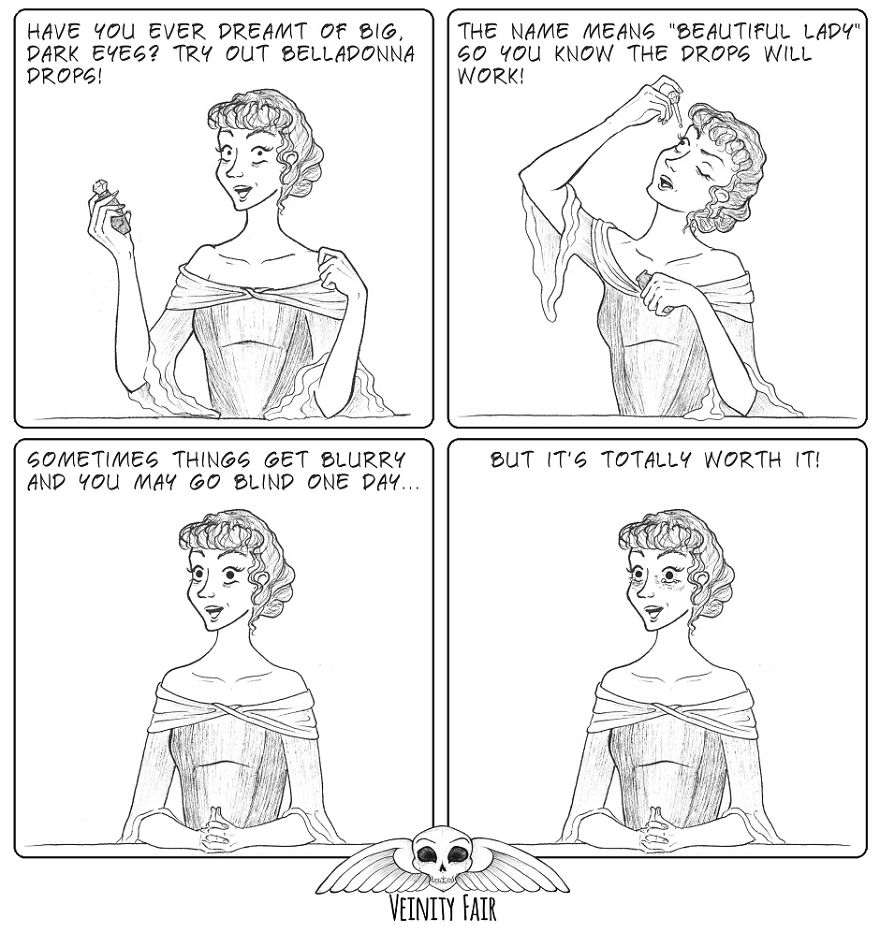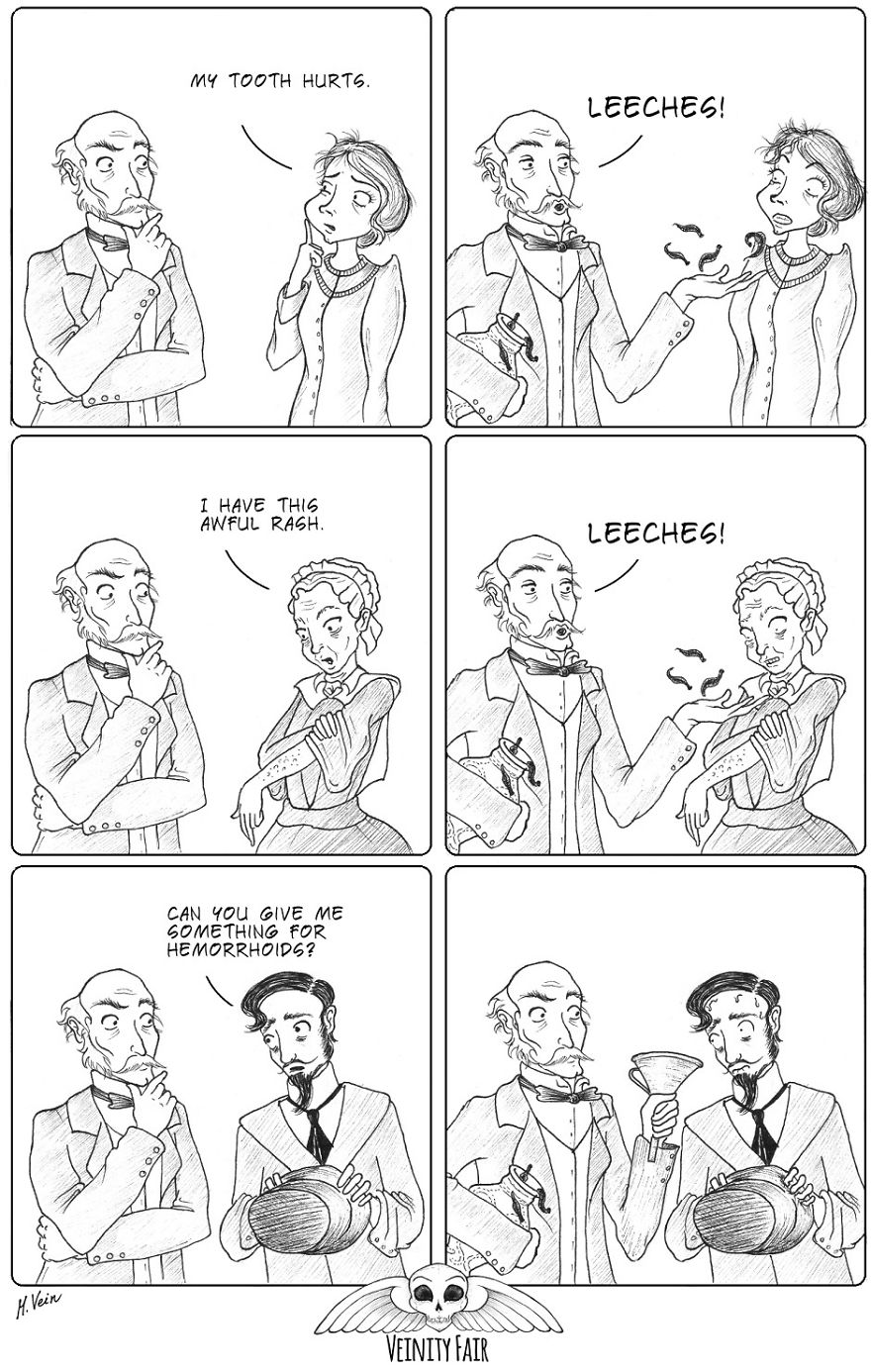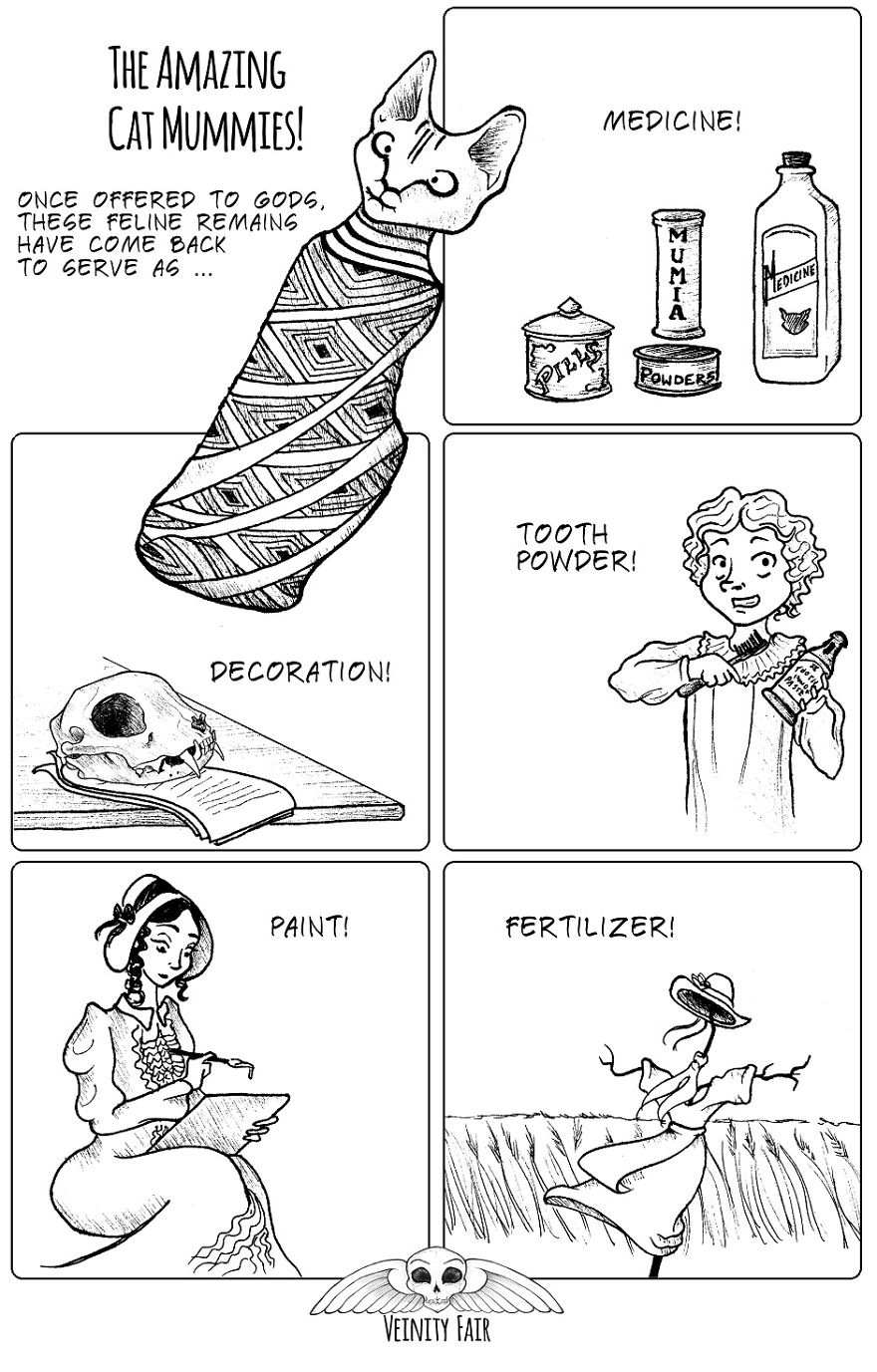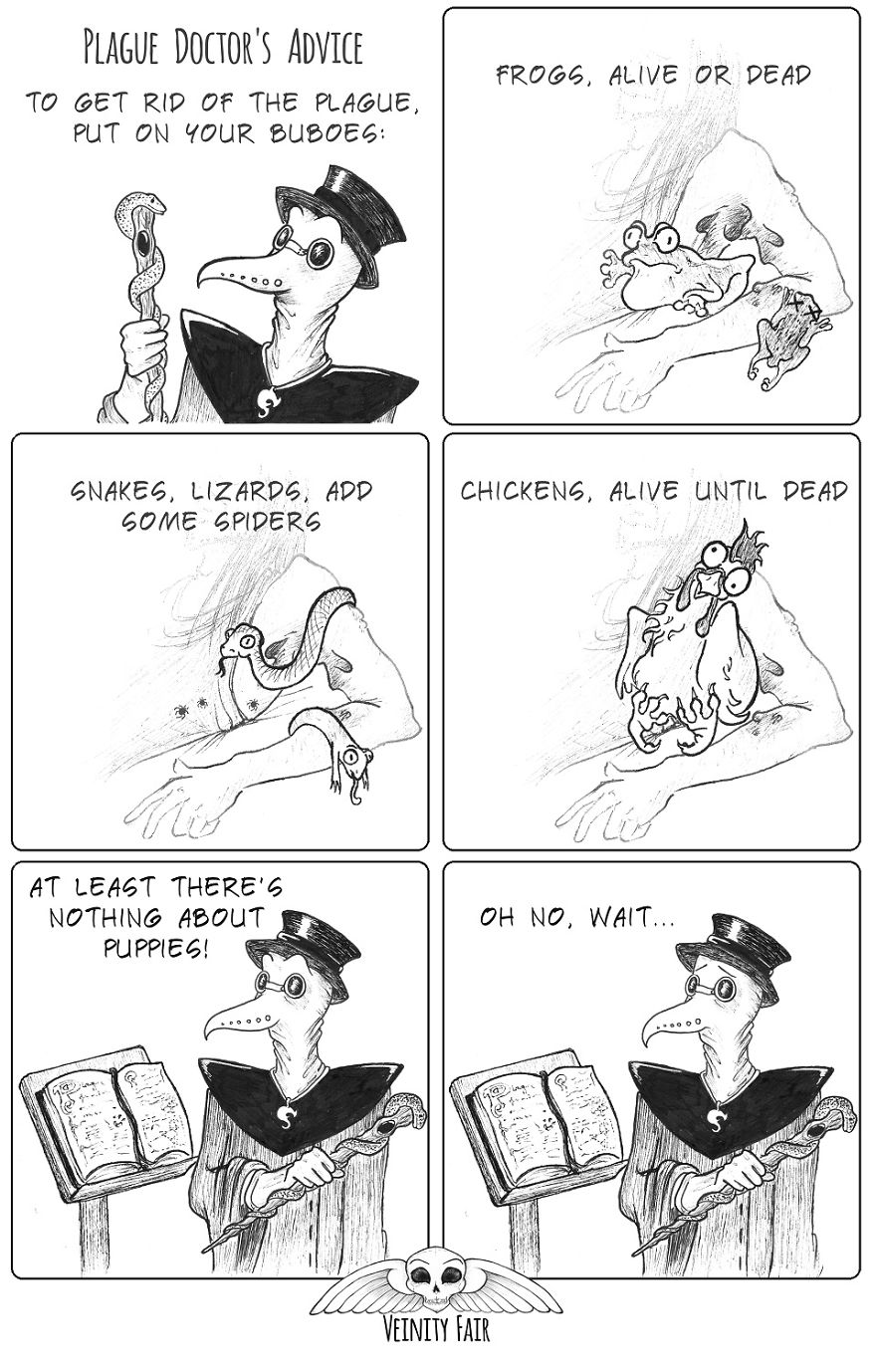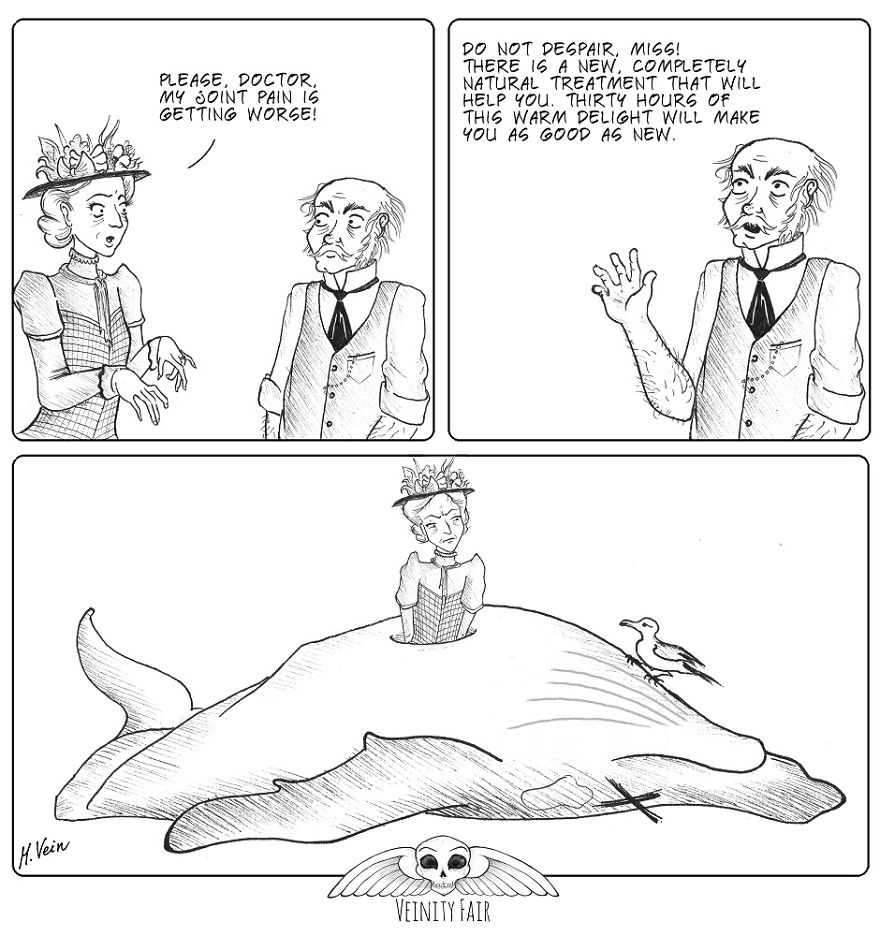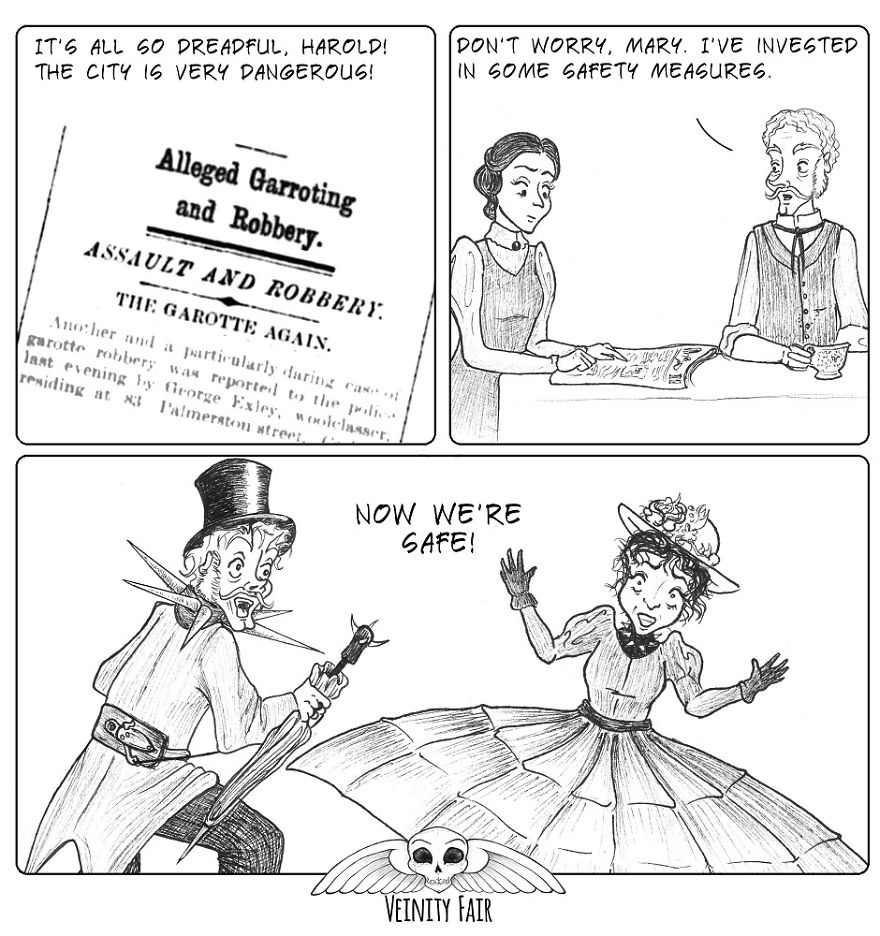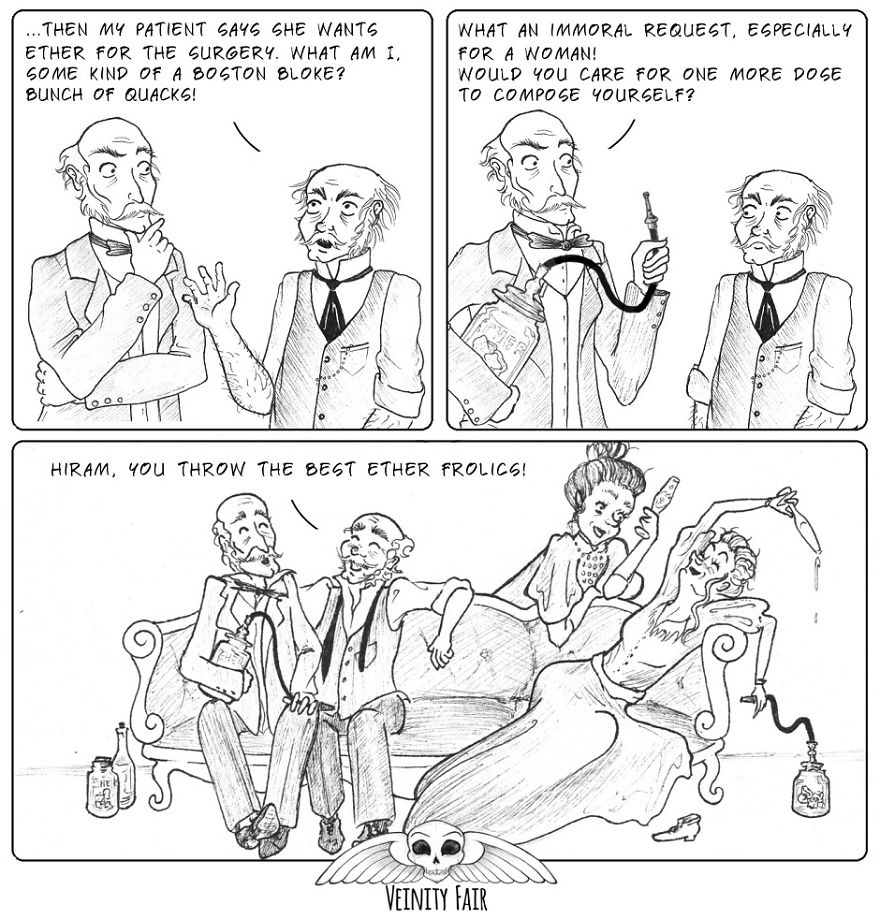When I was young, history classes were usually focused on presenting the past as a collection of important events–battles, conquests, treaties, discoveries, and inventions. While it was all interesting, I've always felt something was missing. What did the everyday life of sailors look like? How did people deal with ailments before anesthesia? What would women do during their periods? Were children having as much fun as they do today? What were the burial practices of our ancestors?
This thirst for knowledge has never ceased and I became an adult engrossed in books, documentaries, and other media which showed me the less glorious, but much more intriguing historical facts. I was especially fascinated with Victorian-era history–its perfect blend of scientific progress, bizarre practices, and questionable individuals.
Of course, I wanted to share all this knowledge with others, but it quickly turned out that not everyone is up to discussing bloodletting methods and vintage underwear during the office lunch break. And that is why I've created Veinity Fair, webcomics with unusual trivia and a dash of a dark sense of humor, fueled by morbid curiosity!
If you want to learn more about the stories presented in the funny comics or resources, check out the Veinity Fair social media and website!
More info: Facebook | Instagram | twitter.com | veinityfair.com
This post may include affiliate links.
Semmelweis' Advice
While working in Vienna General Hospital in the 1840s, Ignaz Semmelweis noticed a curious thing – the mortality rate of new mothers was a lot higher in wards supervised by doctors compared to those supervised by midwives. After some investigating, he found the source of the problem – only doctors had access to both maternity wards and autopsy tables. Semmelweis quickly developed a theory of what he called "cadaverous particles" and introduced rigorous handwashing in his clinics. Unfortunately, even though his method worked spectacularly well, he was ridiculed by most of the medical professionals until his death in a lunatic asylum.
John Snow
John Snow was an English physician, best known for finding the source of a cholera outbreak in Soho, 1854. By putting all known cholera cases on a map, he found the source of all troubles – a contaminated water pump. Why was it such a big deal? This discovery not only led to shutting down the pump, but also worked in favor of the budding germ theory of disease. Even though Snow himself didn't know that at the time, he contributed to the birth of epidemiology.
Crinoline
Crinolines were hugely popular in the second half of the 19th century, since their fairly light construction allowed women to play with fashion and big dress shapes without the need to carry the weight of several petticoats (as it was done earlier). This vast popularity of crinolines among women of all classes led to coining the word 'crinolinemania' and numerous caricatures in the media.
And while there were some hazards connected with wearing crinolines, especially in factories or near an open fire, they were definitely great at providing some personal space.
Mercury & Mad Hatter
Erethism, more commonly known as mad hatter disease, is caused by mercury poisoning and can cause a variety of symptoms including tremors, timidness, anxiety, and even hallucinations. It was quite common among hat-makers as they were exposed to mercury used in the manufacturing of felt hats.
Even though the Hatter from Alice's Adventures in Wonderland doesn't display all of these symptoms, his creation might have been inspired by erethism. We know that Lewis Carroll's uncle, Robert Wilfred Skeffington Lutwidge, was a Lunacy Commissioner supervising Pauper Lunatic Asylums. To keep patients busy, these asylums often organized group activities such as...tea parties.
Arsenic Shopping
There were no regulations on buying and selling arsenic until 1851, and even then it could be relatively easy purchased by anyone who didn't cause any suspicion.
Three Little Kittens
“…It was an age of high infant mortality. Even picture books prepared children for the melancholy realities.”
Add Some Wax
The Edwardian Era brought a new craze in plastic surgery – paraffin wax injections. The promise of a perfect nose or chin quickly faded, when it turned out that wax could wander beneath the skin causing infections, blood clots, and even cancer.
Stethoscope
The invention of the stethoscope was inspired by a rather embarrassing moment in a young French doctor's life.
Bell
Safety coffins designs were mostly created during the 18th and 19th centuries, when the fear of being buried alive was quite common, due to numerous epidemics and popular fiction.
Yes! I actually just wrote a short story about this (It's a Gothic melodrama - the guy gets accidentally buried alive during a Typhoid epidemic, but he's saved by his friends and his girlfriend's ghost).
Trains!
At the turn of the twentieth century, a new form of dangerous and very costly entertainment appeared... staged train crashes. Thousands of Americans would appear at these events, watching the crashes and collecting "souvenirs" from the wrecks.
This craze lasted for almost 40 years!
Mary Shelley
After her husband's death, Mary Shelley kept his calcified heart in a desk drawer. And even though some modern scholars believe it was just his liver, Mary herself was convinced that she had Percy's heart. Quite a suitable keepsake for the author of Frankenstein!
Belladonna Drops
Phossy Jaw
The harrowing conditions in match factories, including the use of highly poisonous white phosphorus, were not a secret in the Victorian times. However, It was not until the matchgirls' strike of 1888 that the situation started to get better.
Alas, the situation would repeat itself in the US for the women who painted radium on watch faces and instrument dials.
Leeches!
Bloodletting used to be one of the most popular medical practices, as it was supposed to bring the balance between the four humors inside the human body and thus treat all ailments, from rashes to tuberculosis.
Amazing Cat Mummies!
For a few centuries, mummies (both human and feline) were used by some in truly surprising and disturbing ways.
Plague Doctor's Advice
Usually Veinity Fair is all about the Victorians, but I just couldn't resist sharing with you some more medieval advice…
Mole
Get Whale Soon
You could also buy a syringe of morphine from the Sears Roebuck and co. Catalogue around 1905.
Garrotting
Garrotting panics and hysterias appeared in a few major cities in the mid-19th century. A few creative merchants quickly saw profitable opportunities in the public's fear…
Ether Frolic
"I don't remember doing ether, but then again that is ether's signature move." - Roger Smith
I'm with you, Ray. They could have had at least 100, and not just 20! Very, very interesting and the OP is a fabulous cartoonist.
Load More Replies...One of my favourite facts about Victorians: They put every issue concerning women down to their uteruses, and termed everything "hysteria" (as in hysterectomy where hyste- = womb). They determined the best way to cure this was for a woman to go to the doctor and have her clitoris stimulated until she calmed down. (Yes, really). Since they believed that a woman could only orgasm with the penis (all hail the patriarchy), this method of sexual stimulation was not seen as all that provocative. Eventually doctors found that A LOT of women needed this treatment (surprise, surprise) and their arms were getting tired. So some bright spark invented a vibrator so doctors could "cure" all these hysterical women without tiring their hands and forearms out. So women have the misogynist Victorians to thank for vibrators. Yes, this is all entirely true. Check it out!
This is an internet myth. Wondering womb (hysteria) was considered a legitimate diagnoses long before and after the Victorian period and goes all the way back to ancient Greece where the womb was described metaphorically as having a mind of its own, or in the parlance of the time 'goes where it wants'. Later scholars literally interpreted that as meaning it could become dislodged within the body. There were many cures for hysteria, but the only thing masturbation is known to be used for was by midwives during particularly painful labour. And actually, it still is! The earliest vibrator designed for the clitoris that I know of (and I'm not saying I'm any kind of scholar on the subject) was Edwardian and was marketed through catalogues for pleasurable use, rather than medicinal. The inventor of the earliest medical vibrator (for treating muscular problems) specifically said he didn't try the device in the treatment of hysterical disorders in males (your read that right) or females, which as far as I am aware, is the only fragment of evidence that suggests it might have been used in this way by someone, to whom he was responding. https://en.wikipedia.org/wiki/Hysteria_(2011_film)#Historical_background
Load More Replies...However, we owe the Victorians and their curious/inquiring/enthusiastic/critical thinking a lot, from the development of modern medicine, a boom in pure and applied sciences, the theory of evolution, the birth of technology, women rights and a revolution in arts, literature, education and research.
I'm with you, Ray. They could have had at least 100, and not just 20! Very, very interesting and the OP is a fabulous cartoonist.
Load More Replies...One of my favourite facts about Victorians: They put every issue concerning women down to their uteruses, and termed everything "hysteria" (as in hysterectomy where hyste- = womb). They determined the best way to cure this was for a woman to go to the doctor and have her clitoris stimulated until she calmed down. (Yes, really). Since they believed that a woman could only orgasm with the penis (all hail the patriarchy), this method of sexual stimulation was not seen as all that provocative. Eventually doctors found that A LOT of women needed this treatment (surprise, surprise) and their arms were getting tired. So some bright spark invented a vibrator so doctors could "cure" all these hysterical women without tiring their hands and forearms out. So women have the misogynist Victorians to thank for vibrators. Yes, this is all entirely true. Check it out!
This is an internet myth. Wondering womb (hysteria) was considered a legitimate diagnoses long before and after the Victorian period and goes all the way back to ancient Greece where the womb was described metaphorically as having a mind of its own, or in the parlance of the time 'goes where it wants'. Later scholars literally interpreted that as meaning it could become dislodged within the body. There were many cures for hysteria, but the only thing masturbation is known to be used for was by midwives during particularly painful labour. And actually, it still is! The earliest vibrator designed for the clitoris that I know of (and I'm not saying I'm any kind of scholar on the subject) was Edwardian and was marketed through catalogues for pleasurable use, rather than medicinal. The inventor of the earliest medical vibrator (for treating muscular problems) specifically said he didn't try the device in the treatment of hysterical disorders in males (your read that right) or females, which as far as I am aware, is the only fragment of evidence that suggests it might have been used in this way by someone, to whom he was responding. https://en.wikipedia.org/wiki/Hysteria_(2011_film)#Historical_background
Load More Replies...However, we owe the Victorians and their curious/inquiring/enthusiastic/critical thinking a lot, from the development of modern medicine, a boom in pure and applied sciences, the theory of evolution, the birth of technology, women rights and a revolution in arts, literature, education and research.

 Dark Mode
Dark Mode 

 No fees, cancel anytime
No fees, cancel anytime 






